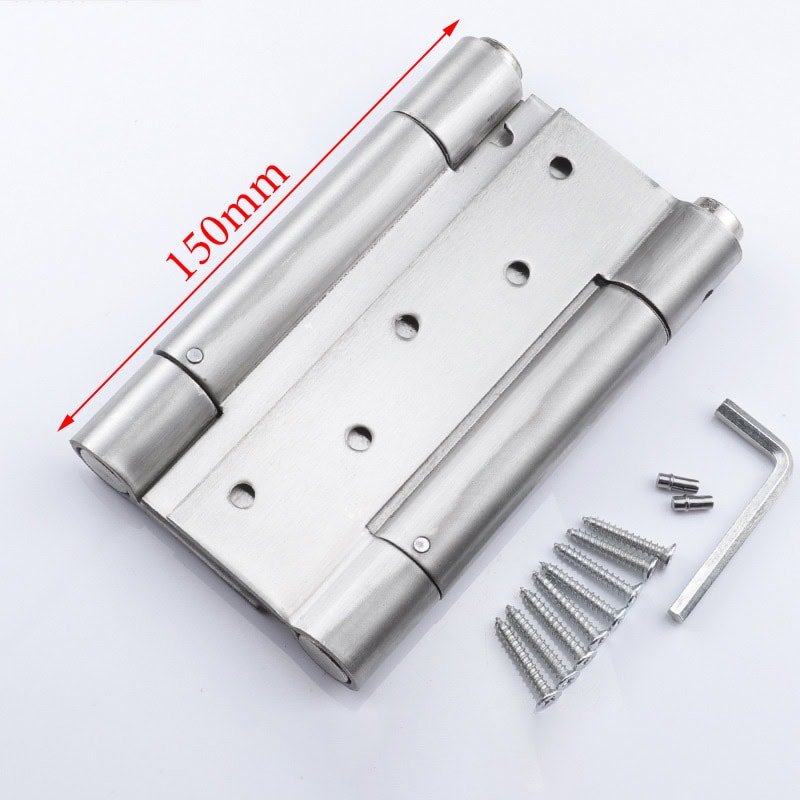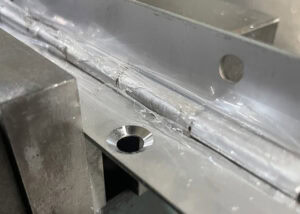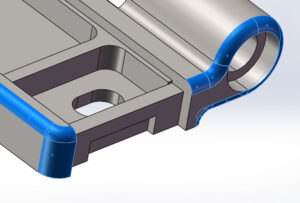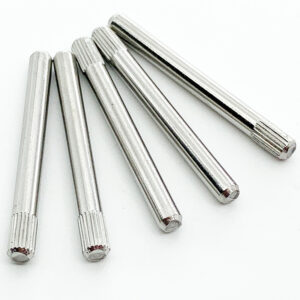Loose door hinge holes can cause the door to sag, scrape the floor, or not close correctly, which can lead to more damage over time. The good news is, there are some excellent solutions to fix the holes and make the butt hinges tight again.
To make the holes tight again, you can use wood glue and toothpicks, dowels or wood anchors. Fill the hole with one of these, drill new pilot holes, and reinstall the screws to make the hinge tight again.
Fixing the loose holes for your door hinge is a simple task with several good methods. Let’s go through the details.

Why Do Door Hinge Holes Become Loose?
Over time, door hinge screws can loosen due to several reasons:
- Wear and tear: Daily use of doors puts stress on the screws and the wood, leading to gradual enlargement of the screw holes.
- Misalignment: Constant pressure or an improperly hung door can stress the hinge screws, eventually causing the wood to weaken.
Understanding why hinge holes become loose helps in choosing the right method to repair them.
Using Toothpicks or Matches to Fill Loose Holes
One of the simplest and most cost-effective ways to fix loose door hinge holes is by using toothpicks or matchsticks.
- Step 1: Apply wood glue to several toothpicks or matchsticks, then insert them into the loose hole until it’s packed.
- Step 2: Allow the glue to dry completely, then trim any excess wood from the toothpicks that extend beyond the surface.
- Step 3: Once the area is dry and smooth, reinsert the screws into the filled hole. The wooden toothpicks will provide the necessary grip for the screws to hold securely.
This method works well for smaller holes where the screw has simply worn away the wood surrounding it.
Filling Holes with Wooden Dowels
For larger or severely damaged holes, using wooden dowels is an excellent long-term solution.
- Step 1: Choose a dowel that fits snugly in the enlarged screw hole. Apply wood glue to the dowel before inserting it into the hole.
- Step 2: Let the glue dry completely. After drying, saw off any part of the dowel that sticks out, making the surface flush with the wood.
- Step 3: Drill a new pilot hole through the dowel, ensuring the correct size for the screw. Reinsert the screw to secure the hinge back in place.
This method offers a sturdy solution for significantly worn holes and provides a solid base for the screws.
Using Wood Anchors for More Permanent Fixes
Wood anchors are an ideal option when the screw holes are stripped, and the wood has become too soft or damaged to hold screws effectively.
- Step 1: Insert a wood anchor, such as the “Screw-It-Again” wood anchor, into the hole. These anchors expand as the screw is driven into them, gripping the surrounding wood.
- Step 2: Insert the screw, and the anchor will hold it securely in place, preventing future movement or loosening.
Wood anchors offer a durable fix that can handle repeated opening and closing of doors without loosening over time.
Fixing Loose Holes with Epoxy Putty
For cases where traditional repairs like toothpicks or dowels don’t work, epoxy putty can be used to fill the hole completely.
- Step 1: Mix the epoxy putty and apply it into the hole, filling it thoroughly.
- Step 2: Once the epoxy has hardened (usually after a few hours), drill a new hole and reinsert the screws.
Epoxy putty creates a rock-solid base for screws and is ideal for situations where other solutions may fail.
Tightening Loose Hinge Pins
Sometimes, door hinges may become loose due to a hinge pin working its way out. This can lead to sagging or misaligned doors.
- Step 1: Tap the hinge pin back into place using a hammer.
- Step 2: Apply a lubricant such as petroleum jelly or graphite powder to prevent the pin from coming loose again in the future.
By maintaining the hinge pin’s tightness, you can prevent future problems that may affect the hinge screws.
Choosing the Right Screw Size for Door Hinges
Using the right size screw is critical for securing door hinges and preventing future loosening.
- Standard screw sizes: Door hinge screws should typically be at least 1-1.5 inches long for proper fastening. Longer screws, such as 2 or 3 inches, can penetrate deeper into the door frame, providing a more secure hold.
- Thicker screws: For added stability, choose thicker screws that fit snugly into the hinge hole.
The correct screw size ensures the hinge is properly fastened to the frame and reduces the risk of the screws loosening over time.
Reinforcing the Hinge with Longer Screws
If the current screws are too short and failing to hold the hinge in place, replacing them with longer screws can provide a stronger grip.
- Step 1: Choose screws that are at least 2-3 inches long to ensure they reach the door frame.
- Step 2: Remove the existing short screws and insert the longer screws, which will provide better leverage and pull the door frame and jamb together.
This method not only fixes the problem but also reinforces the hinge for future use.
Preventing Future Hinge Issues
To avoid future hinge problems, it’s essential to practice regular maintenance:
- Check the screws periodically to ensure they remain tight.
- Lubricate the hinge pins to reduce friction and prevent wear.
- Inspect the door alignment to ensure it’s not putting unnecessary pressure on the hinges.
These preventive measures can help keep your hinges and doors in top condition for years to come.
When to Replace the Door Hinge Entirely
Sometimes, the hinge itself may be damaged beyond repair, making it necessary to replace it.
- Step 1: Remove the old hinge and ensure that the screw holes are filled and prepped properly before attaching the new hinge.
- Step 2: Use high-quality replacement hinges and ensure the screws are the correct size and length for your door and frame.
By replacing the hinge, you can ensure better performance and avoid further issues with door sagging or misalignment.
Conclusion
By using these methods, you can successfully tighten loose door hinge holes and prevent long-term damage. With proper care and the right tools, your doors will remain secure for years to come.




